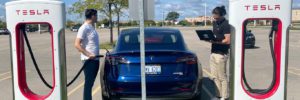
Q&A with Hakan Ekmen, Managing Director umlaut
For the second year in a row, Charged has partnered with the global engineering and consulting firm umlaut to test and compare the user experience at the top DC fast charging networks and bring you the 2021 EV Charging Infrastructure Benchmark.
In 2020, after performing a comparative study of network providers in Germany, Austria and Switzerland, umlaut adapted its testing methodology to the US market, where testing took place in EV hotspot California in early September 2020.
In 2021, umlaut’s testing team moved to the Northeast and covered 2,100 miles to find and test top sites from 7 networks—through 7 states over 6 days during September 2021. The testers conducted nearly 150 tests at 28 stations (4 each from 7 different networks) in Michigan, Ohio, Maryland, New Jersey, New York, Connecticut and Pennsylvania. The goal was to bring you a comparison of the charging industry’s best efforts: a search for the best user experience currently available.
The testing experts: umlaut
umlaut is a global, full-service, cross-industry, end-to-end engineering consultancy company with 4,200 specialized experts and engineers, and operations in 50 locations all over the world. It was recently acquired by Accenture. The company regularly releases “technology roadmaps” in various industries, including energy, telecommunications, automotive and aviation.
umlaut has more than 20 years of experience in testing and benchmarking, and has worked with all the US automotive OEMs on various vehicle-related technologies, as well as all the telecom operators in areas like 5G. For example, every year umlaut assesses over 200 telecom networks in more than 120 countries. Its methodology is respected as the de facto industry standard.
Charged recently chatted with umlaut Managing Director Hakan Ekmen to learn more about its busy year and the 2021 EV Charging Infrastructure Benchmarks.
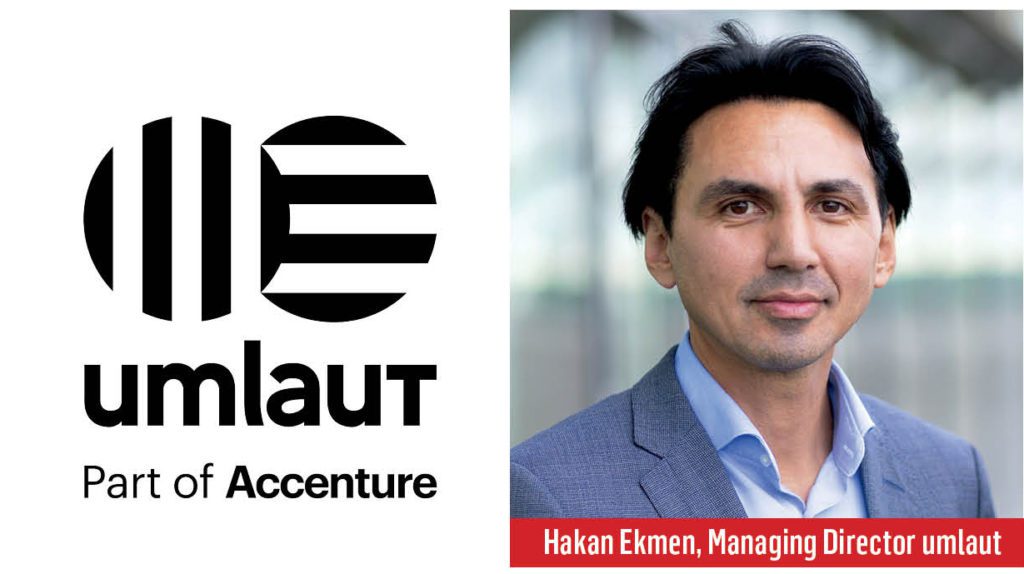
Charged: First of all, congratulations! I understand umlaut was acquired by Accenture in 2021.
Hakan Ekmen: Yes, Accenture has made a series of acquisitions to build its capabilities across industries. Recent acquisitions include operational technology providers like Advoco here in the US, a systems integrator for asset management solutions. Also, some consultancy companies and technology companies, like SALT Solutions in Germany. The move to acquire umlaut is one of the biggest acquisitions in the history of the company. The idea is that engineering and manufacturing of products all around cloud, artificial intelligence, 5G, will be redefined. The agreement was closed a few months back, and now our 4,200 employees are with Accenture‘s Industry X service.
Charged: Can you compare this year’s EV Charging Infrastructure Benchmarks and last year’s in both Europe and the US? What differences have you seen, what’s encouraging, and what still needs to be done?
Hakan Ekmen: First of all, we have to ensure continuity. We cannot start an exercise and then change it abruptly. Therefore, the methodology we are doing has to evolve, always keeping in mind that it should have end-user relevance. We did make some changes in the methodology, introducing technical key performance indicators (KPIs) in the charging process. Last year was the first year we assessed US charging infrastructure, and we started in the state which had the most relevance for electrified vehicles—California.
A total of 5 charging providers were tested last year. This year, we added Tesla and Blink, because to make it more relevant, the methodology and the things we do should evolve. We have also introduced some new KPIs, to have in-depth analytics, because the industry is interested in this comprehensive level of data and analytic insights.
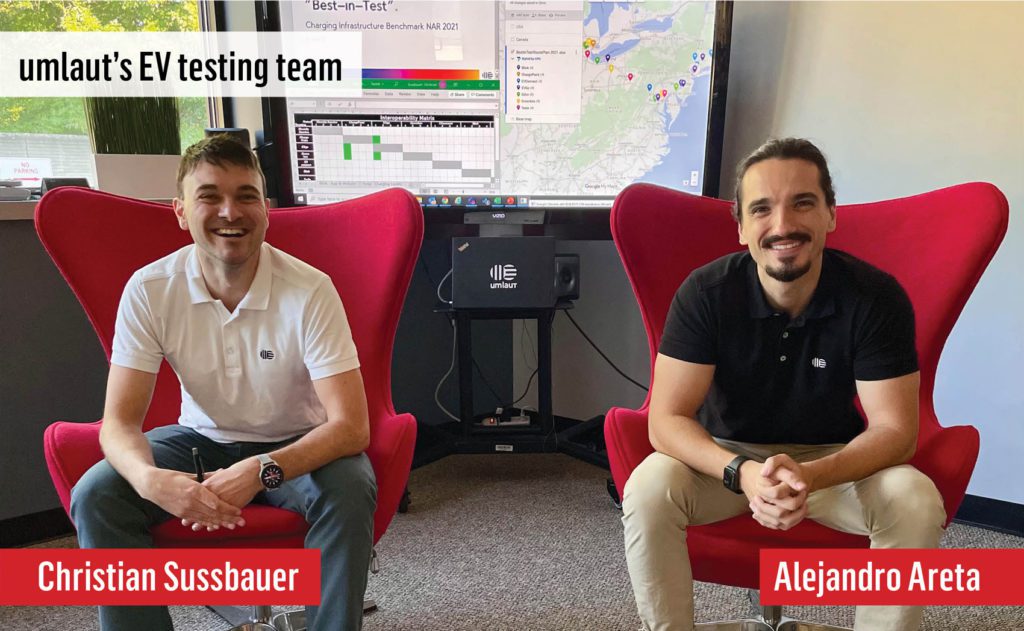
The 2021 benchmark indicates that charging infrastructure is growing substantially, and the charging process is becoming more reliable. Our testers found clear improvements in holding charging power, as well as roaming and interoperability between charging networks, compared to last year.
The user experience is always a main focus for us, and many steps in the process could be removed or improved, as each customer interaction has the potential for error. If you look to what steps are of concern from an end-user perspective, then we see that the whole chain can be improved in the future.
In Europe, we also published a charging infrastructure benchmark, and we definitely see that, with the rising numbers of EVs, the importance of charging infrastructure is growing. In Germany, for example, 25% of new cars are electrified. There are now 70 electric vehicles for every charging station, which means if you just wait, it’ll explode. But you see also that the automotive industry is managing the transition well.
umlaut and our partner, Connect, conducted and published a comprehensive end-user charging test of EMPs (providers of charging apps and billing solutions) and CPOs (operators of charging points) in Germany, Austria, Switzerland, the Netherlands, Belgium and Luxembourg.
When you look to the end results, EnBW won twice in Germany, ranking first in the EMP and the CPO categories. Ionity secured victory among the CPOs in Austria, Switzerland and Belgium. Fastned ranked first among CPOs in the Netherlands. Among the EMPs, Smatrics won in Austria and Move in Switzerland. In Luxembourg, where Chargy is the only CPO, no winner was chosen.
Charged: Do you have any other services for EVs and e-mobility, and how do they integrate with all your other services?
Hakan Ekmen: That’s definitely a future topic for us. Our experts are always working end-to-end, including all the relevant topics—strategy, business model, end users, quality management and many more. We cover the entire value creation process from battery to vehicle, and charging infrastructure to the ecosystem. New examples are battery storage systems, fuel cell electrical vehicles and aircraft electric charging infrastructure. Then H2 infrastructure and the usage of H2 as a fuel is a central component to decarbonize the mobility sector, which was also relevant for the US. We see the whole chain as relevant, and we are ramping up our talents here. Across the regions, in the US, Canada, Brazil, South Africa, Europe, the UK, Australia, India and a lot of other countries, we are ramping up the talents on our team to become a relevant partner for our customers there.
We also are working on additional benchmarks relative to the connected vehicle space and ADAS [advanced driver-assistance systems], which we’re going to release soon.
In the connected vehicle benchmark, we look to the cockpit of a vehicle, and we test more or less everything that is there—entertainment, usability, all the functionality the users are receiving when they are sitting in a car. We have established this format in the US, in Europe and in China recently. We compared, for example, how the Chinese OEMs are performing compared to the European ones. It’s interesting when some Chinese OEMs are entering Europe, what they can expect out of this.
Our Best in Test seal isn’t necessarily awarded to the vehicle, but to the measure of the OEM’s most connected features. So for example, we’re evaluating the highest-level ADAS feature that is available in the market for customers to experience. We have an entire benchmarking system and methodology for both the ADAS features and for the connected vehicle features.
MORE:
2021 EV Charging Infrastructure Benchmarkfrom Charged EVs https://ift.tt/E6elNALO1
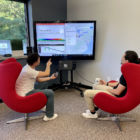
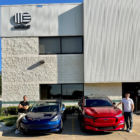
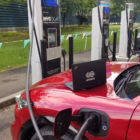
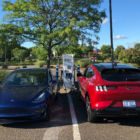



No comments:
Post a Comment